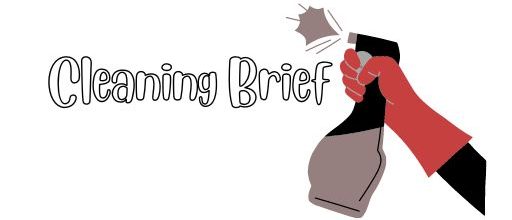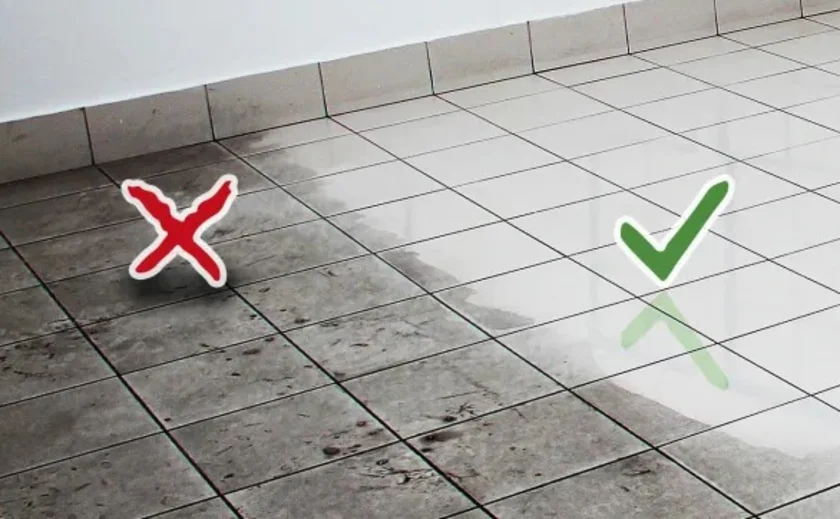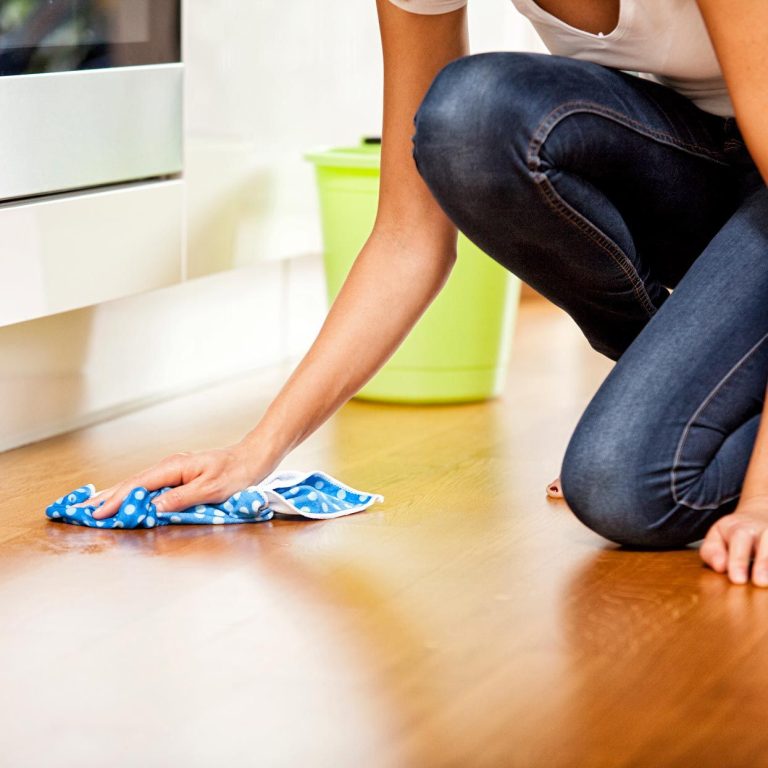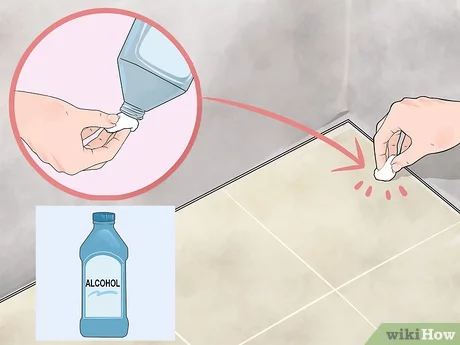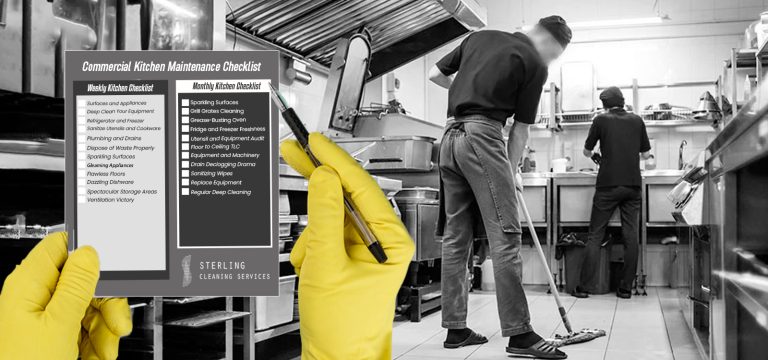How to Clean Kitchen Floor With Bleach: Easy Steps for Sparkling Tiles
To clean your kitchen floor with bleach, dilute the bleach in water according to the instructions on the label and mop the floor using the solution. Make sure to rinse the floor thoroughly with clean water afterwards.
Now, let’s discuss how to effectively clean your kitchen floor with bleach. Keeping your kitchen clean is essential for maintaining a healthy and hygienic environment. The kitchen floor is especially prone to dirt, stains, and bacteria buildup, making regular cleaning crucial.
While there are various cleaning methods, using bleach can be an effective way to remove tough stains and disinfect your kitchen floor. By following the right steps, you can clean your kitchen floor with bleach efficiently and ensure a clean and germ-free space for cooking and food preparation.
Preparation
To clean your kitchen floor with bleach, start by preparing a solution of bleach and water in a bucket. Then, sweep or vacuum the floor to remove any debris. After that, carefully mop the floor with the bleach solution, ensuring to ventilate the area.
Finally, let the floor air dry completely.
Gathering Supplies
Before you start cleaning your kitchen floor with bleach, it’s essential to gather all the necessary supplies. Having everything on hand will save you time and ensure a smooth cleaning process. Here are the items you’ll need:- Bleach
- Water
- Bucket
- Mop
- Gloves
- Protective eyewear
- Scrub brush
- Old towels or rags
Clearing The Area
To efficiently clean your kitchen floor, it’s crucial to clear the area of any obstacles that might interfere with the cleaning process. Follow these steps to prepare your kitchen floor for the bleach cleaning:- Remove any movable furniture, such as chairs, stools, or trash bins, from the kitchen floor.
- Place a rug or mat outside the kitchen entrance to prevent the bleach solution from spreading to other areas.
- If there are large appliances, like refrigerators or ovens, in the kitchen, pull them away from the walls to ensure ease of access.
- Sweep or vacuum the floor to remove any loose dirt, crumbs, or debris.

Credit: naturesnurtureblog.com
Mixing The Solution
Mixing the solution is a crucial step in cleaning your kitchen floor with bleach. By following the right measurements and adding water correctly, you can create a powerful cleaning solution that effectively removes dirt and grime. In this section, we will discuss the steps involved in mixing the solution using HTML headings. Let’s dive in and learn how to clean your kitchen floor with bleach.
Measuring Bleach
To begin, it is important to accurately measure the bleach for your cleaning solution. Wearing rubber gloves and using a measuring cup, carefully pour the required amount of bleach into a container. It is recommended to use one cup (240 ml) of bleach for every gallon (3.8 liters) of water.
Adding Water
After measuring the bleach, it’s time to add water to the cleaning solution. Fill a large bucket or container with the required amount of water, depending on the size of your floor. It is crucial to follow the ratio of one cup of bleach to one gallon of water to ensure the proper dilution of the solution.
When adding water, make sure to pour it slowly into the container with the bleach. This will help prevent any splashing or accidental spills, ensuring your safety during the cleaning process.
Once you have added the water, use a long-handled spoon or a stirring stick to mix the solution. Gently stir the mixture in a circular motion to ensure that the bleach is thoroughly incorporated with the water. This will result in a well-diluted and effective cleaning solution for your kitchen floor.
After you have mixed the solution, it is time to move on to the next step: applying the bleach solution to your kitchen floor. Stay tuned for the next section of this blog post, where we will guide you through the process of cleaning your kitchen floor using bleach.
Applying The Bleach Solution
When it comes to cleaning your kitchen floor with bleach, applying the bleach solution is a critical step to effectively eliminate germs and bacteria. Proper application ensures thorough disinfection and a pristine, hygienic surface. Here’s how to apply the bleach solution to your kitchen floor:
Using A Mop
Start by diluting the bleach with water according to the manufacturer’s instructions. Use a bucket or a spray bottle for this purpose. Once the solution is prepared, dip a clean mop into the bleach mixture and wring it out to remove excess liquid. Mop the entire kitchen floor, being careful not to leave any areas untouched. Pay special attention to corners and high-traffic areas.
Scrubbing Stubborn Stains
If there are stubborn stains on the floor, prepare a stronger bleach solution and apply it directly onto the affected areas. Allow the solution to sit for a few minutes to penetrate the stains, then use a scrub brush or a sponge to gently scrub the stains away. Rinse the area thoroughly with water afterwards to remove any residue.
:strip_icc()/The-Best-Way-to-Clean-Laminate-Floors-to-Protect-Their-Shiny-Finish_sourcefile-92515000195c411994b06e5b23599fb4.jpg)
Credit: www.bhg.com
Rinsing And Drying
To clean your kitchen floor with bleach, start by rinsing it thoroughly with water to remove any loose dirt or debris. After that, simply dry the floor completely to ensure a clean and germ-free surface.
Rinsing The Floor
Once you have effectively cleaned your kitchen floor with bleach, the next step is to rinse off any residual mixture. Rinsing the floor is essential to remove any remaining bleach and prevent it from causing damage over time.
To rinse the floor, fill a bucket with clean water. Make sure the water is at room temperature or slightly warm, as hot water may reactivate the bleach and cause unwanted fumes. Using a clean mop or sponge, dip it into the bucket and wring out any excess water.
Begin rinsing the floor by lightly mopping it with the damp mop or sponge. Work in small sections, starting from one corner of the room and moving towards the exit. Be thorough in your rinsing, ensuring you cover the entire kitchen floor surface.
Allowing To Air Dry
Once you have thoroughly rinsed the kitchen floor, it’s time to let it air dry. Allowing the floor to air dry is important to ensure the bleach residue evaporates without leaving any streaks or marks. This process may take anywhere from 30 minutes to an hour, depending on the ventilation in your kitchen.
During the drying process, it’s important to keep the kitchen area clear and avoid walking on the wet floor to prevent any accidental slips or falls. You can use caution signs or barricades to notify others in the household about the wet floor.
If you have access to a fan or dehumidifier, consider using it to speed up the drying process. The circulating air will help remove moisture and expedite the evaporation of any remaining water or bleach residue.
Once the kitchen floor is completely dry, you can enjoy a sparkling clean surface that is free from dirt, grime, and stains.
Remember, while cleaning your kitchen floor with bleach can be an effective way to maintain cleanliness and hygiene, it’s essential to follow safety guidelines. Always wear protective gloves and ensure the area is well-ventilated to prevent any potential irritations or hazards.
Safety Precautions
When it comes to cleaning your kitchen floor with bleach, it’s important to remember that safety should be your top priority. Bleach is a powerful cleaning agent that can effectively kill germs and bacteria on your floor. However, it can also pose risks to your health if not used properly. To ensure a safe cleaning process, it is essential to follow these safety precautions:
Ventilation
Proper ventilation is crucial when using bleach in an enclosed space like your kitchen. Bleach emits strong fumes that can irritate your respiratory system, so you should always ensure good airflow. Open windows and doors to allow fresh air to circulate, helping to minimize the concentration of fumes. Turning on fans or using exhaust systems can also assist in removing fumes from the area.
Protective Gear
Wearing protective gear is a must when dealing with any cleaning chemical, including bleach. By protecting yourself, you minimize the risk of skin and eye irritation. Here’s a list of essential protective gear you should have:
| Protective Gear |
|---|
| Gloves |
| Goggles |
| Mask or Respirator |
Wearing gloves made of rubber or nitrile can shield your hands from bleach, preventing skin irritation or burns. Similarly, goggles are crucial to protect your eyes from splashes or accidental contact with bleach. Additionally, wearing a mask or respirator can safeguard your respiratory system by filtering out harmful bleach fumes.
- Always have gloves, goggles, and a mask or respirator on hand before starting the cleaning process.
- Ensure the gloves fit properly to provide maximum protection.
- Keep the goggles securely in place during the entire cleaning process.
- Choose a mask or respirator that is suitable for bleach fumes.
Remember, these safety precautions are crucial to minimizing the risks associated with cleaning your kitchen floor with bleach. By following these steps, you can confidently keep your kitchen floor spotlessly clean and free from germs.

Credit: www.amazon.com
Frequently Asked Questions On How To Clean Kitchen Floor With Bleach
Q: Is It Safe To Clean Kitchen Floor With Bleach?
A: Yes, it is safe to clean your kitchen floor with bleach, as long as it is used properly and in the correct dilution. Bleach is an effective disinfectant that can kill germs and bacteria on your floor. However, it is important to use gloves and ensure good ventilation while cleaning to avoid any health risks.
Q: How Do I Clean My Kitchen Floor With Bleach?
A: To clean your kitchen floor with bleach, mix 1 cup of bleach with 1 gallon of water. Sweep or vacuum the floor to remove any loose debris, then mop the floor with the bleach solution. Let it sit for a few minutes, then rinse the floor thoroughly with clean water.
Make sure to ventilate the area and wear gloves while cleaning.
Q: Can I Use Bleach On All Types Of Kitchen Flooring?
A: While bleach can be used on most types of kitchen flooring, it is important to check the manufacturer’s instructions or consult a professional if you have any concerns. Avoid using bleach on porous materials like unsealed wood or unglazed tile, as it can cause damage.
Always do a patch test in an inconspicuous area before using bleach on your kitchen floor.
Q: What Precautions Should I Take When Using Bleach On My Kitchen Floor?
A: When using bleach on your kitchen floor, it is important to take necessary precautions to protect yourself and your surroundings. Ensure good ventilation by opening windows or using fans. Wear gloves and avoid mixing bleach with other cleaning products to prevent chemical reactions.
Follow the instructions on the bleach bottle for proper dilution.
Conclusion
To wrap up, cleaning your kitchen floor with bleach is a quick and effective way to maintain a sanitary environment. By following the simple steps and safety precautions outlined in this guide, you can easily achieve a sparkling clean floor free of germs and bacteria.
Keep your kitchen fresh and hygienic with regular bleach cleaning sessions.
